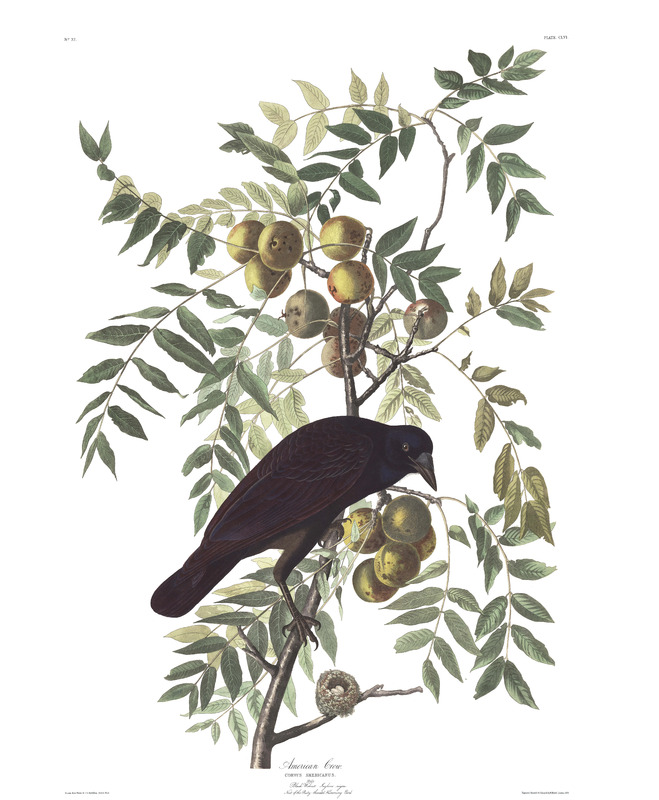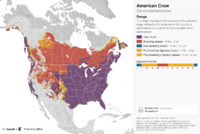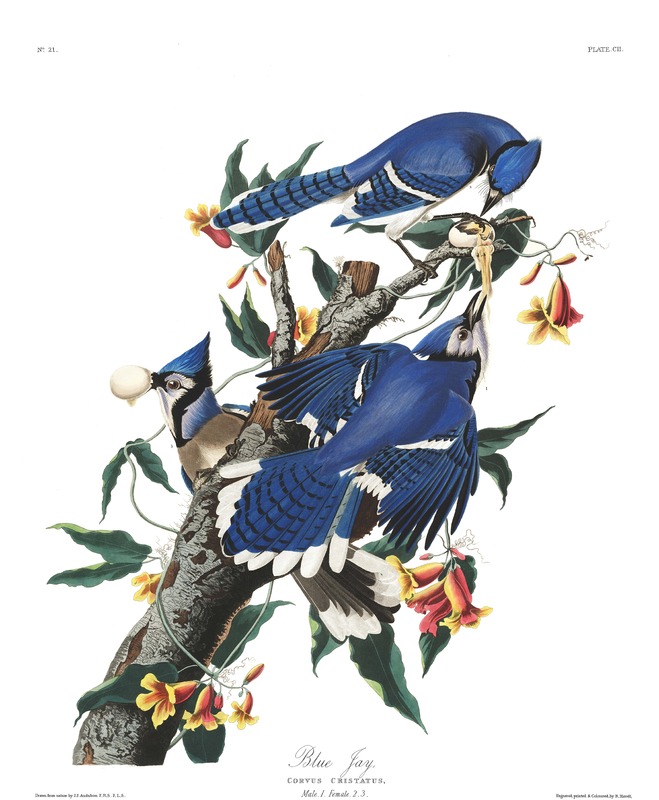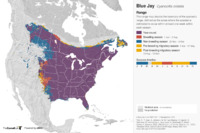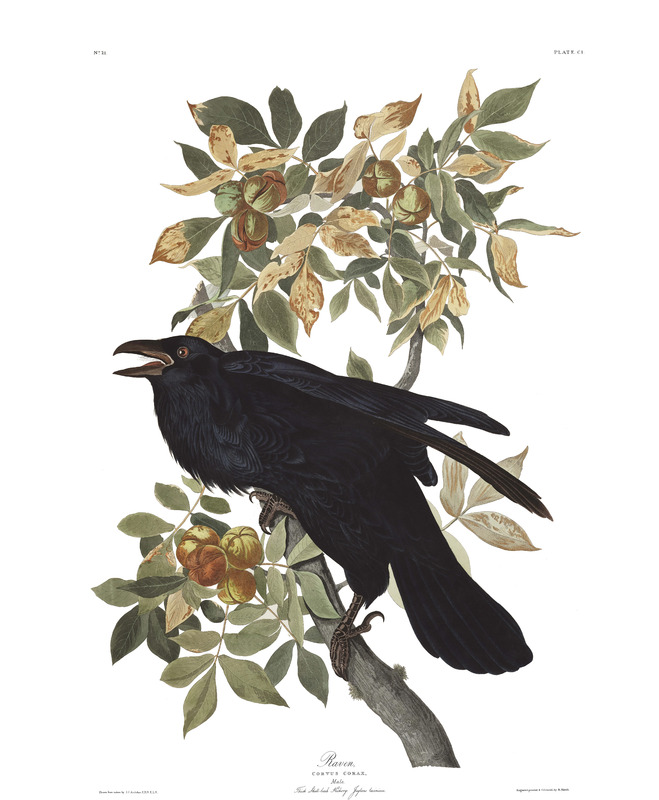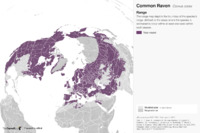Crows, Magpies, and Jays
Birds in the Corvidae family are characterized by their long, strong beaks and larger size than most birds in the passerine order, ranging from 7-25 inches in length. They come in many colors, with the most common colorations being white, black, gray, and blue. They are typically omnivorous and eat vegetation as well as insects and small animals. They are highly intelligent and many can be trained to do tasks or tricks. They usually live in open areas and forests and can be found worldwide.
Included below are the American Crow, the Black-billed Magpie, the Blue Jay, and the Common Raven.
American Crow
Corvus brachyrhynchos
Habitat: Woodlands, farms, fields, river groves, shores, towns. Lives in a wide variety of semi-open habitats, from farming country and open fields to clearings in the woods.
Preferred Food: Omnivorous. Seems to feed on practically anything it can find, including insects, spiders, snails, earthworms, frogs, small snakes, shellfish, carrion, garbage, eggs and young of other birds, seeds, grain, berries, and fruit.
Fun Fact: Crows can be trained very easily and have been known to bring humans gifts in the form of shiny objects such as bottle caps and coins.
Black-billed Magpie
Pica hudsonia
Habitat: Rangeland, conifers, streamsides, forest edges, farms. Found in many kinds of semi-open country in the west.
Preferred Food: Omnivorous. Diet is quite varied, but feeds on insects more consistently than most members of the crow family.
Fun Fact: Black-billed Magpies have been known to hold "funerals". When one magpie discovers a dead magpie, it will call loudly to attract up to 40 other magpies. The funeral gathering may last for 10 to 15 minutes before the birds disperse.
Blue Jay
Cyanocitta cristata
Habitat: Oak and pine woods, suburban gardens, groves, towns.
Preferred Food: Omnivorous. Eats mainly vegetable matter, but will also feed on insects and small animals.
Fun Fact: Tool use has never been reported for wild Blue Jays, but captive Blue Jays used strips of newspaper to rake in food pellets from outside their cages.
Common Raven
Corvus corax
Habitat: Boreal and mountain forests, coastal cliffs, tundra, desert.
Preferred Food: Omnivorous. Prefers animal matter such as insects and small animals like frogs and smaller birds. Will eat just about anything, including seeds and nuts from feeders.
Fun Fact: Ravens can mimic human voices and are able to communicate on a rudimentary level.
